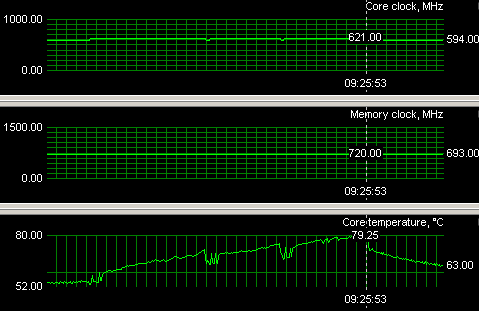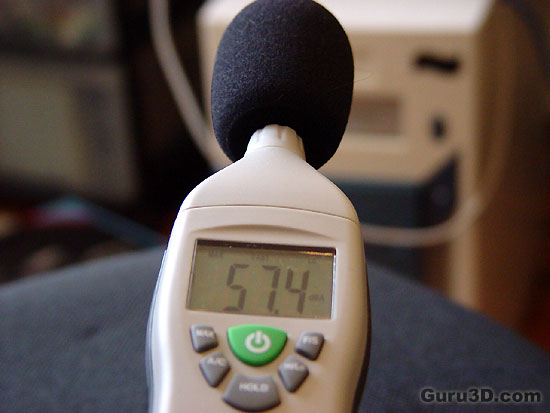Page 5
Well it says CrossFIRE but is it hot ?![]()
Well I guess it already had "Fire" in Crossfire.
As always we test temperatures of the graphics cards when they are in idle and 100% at work. While temperature remains within the safety margins the cards are getting really hot ! Heat is one thing you'll have to live with as these cards will get warm, very warm. You'll notice it at boot up already as the cards coolers will immediately spin at 100% and move around air like a blow-dryer (and actually sound like one). It's an indication that the cards need a lot of cooling. We'll discuss sound in the next section.
At idle the cards will be at roughly 50-55 Degrees C .. yes, that's at idle after the Windows boot up.
When we fire off some benchmarks at the cards they will function at 100% graphics core utilization. Just like the entire high-end range of ATI Radeon graphics cards we measured a maximum of around 80 Degrees C peak temperature. I find this to be very high.
The big two slot exhaust coolers also require a lot of space and yes .. tell us something about the temperature a product will create. With Crossfire 1900 XT you now have two of such cards in the PC.
Please, make sure your PC is well ventilated so the cards will get fresh air.

The three game-demo's from 3DMark05 clearly show the temperature peak
Noise Levels - dB aah what ??
When graphics cards produce a lot of heat usually that heat needs to be transported away from the hot core as fast as possible. Often you'll see massive active fan solutions that can indeed get rid of the heat, yet all the fans these days make the PC a noisy son of a gun. I'm doing a little try out today with noise monitoring, so basically the test we do is extremely subjective. We bough a certified dBA meter and will start measuring how many dBA originate from the PC. Why is this subjective you ask ? Well, there is always noise in the background, from the streets, from the HD, PSU fan etc etc, so this is by a mile or two not a precise measurement. You could only achieve objective measurement in a sound test chamber.
The human hearing system has different sensitivities at different frequencies. This means that the perception of noise is not at all equal at every frequency. Noise with significant measured levels (in dB) at high or low frequencies will not be as annoying as it would be when its energy is concentrated in the middle frequencies. In other words, the measured noise levels in dB will not reflect the actual human perception of the loudness of the noise. That's why we measure the dBa level. A specific circuit is added to the sound level meter to correct its reading in regard to this concept. This reading is the noise level in dBA. The letter A is added to indicate the correction that was made in the measurement.
|
TYPICAL SOUND LEVELS | ||
|
Jet takeoff (200 feet) |
120 dBA |
|
|
Construction Site |
110 dBA |
Intolerable |
|
Shout (5 feet) |
100 dBA |
|
|
Heavy truck (50 feet) |
90 dBA |
Very noisy |
|
Urban street |
80 dBA |
|
|
Automobile interior |
70 dBA |
Noisy |
|
Normal conversation (3 feet) |
60 dBA |
Crossfire 100% utilized |
|
Office, classroom |
50 dBA |
Moderate |
|
Living room |
40 dBA |
|
|
Bedroom at night |
30 dBA |
Quiet |
|
Broadcast studio |
20 dBA |
|
|
Rustling leaves |
10 dBA |
Barely audible |
We startup a benchmark, we take the dBA meter, move away 75 CM and then aim the device at the active fan on the graphics card. We measure almost 58 dBa which is to be considered a moderate to noisy noise level coming from the PC. Again, this is a very subjective test, but hey .. that's a lot.

The Crossfire rig, once it became alive, is loud at 58 dBA
